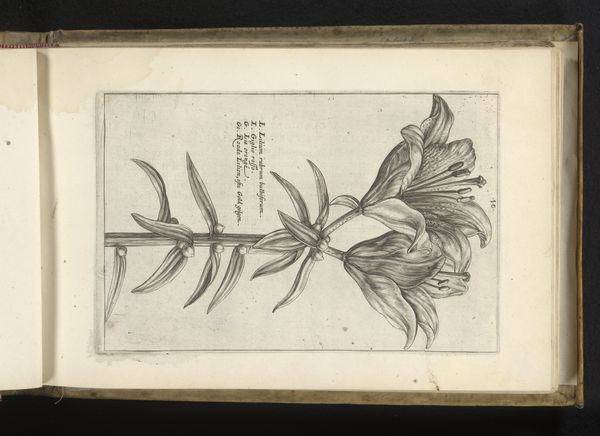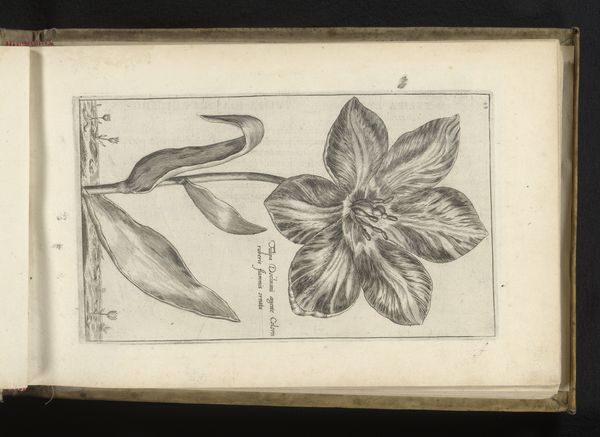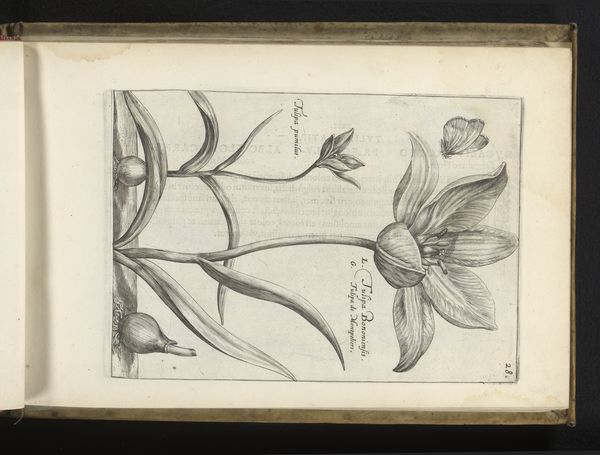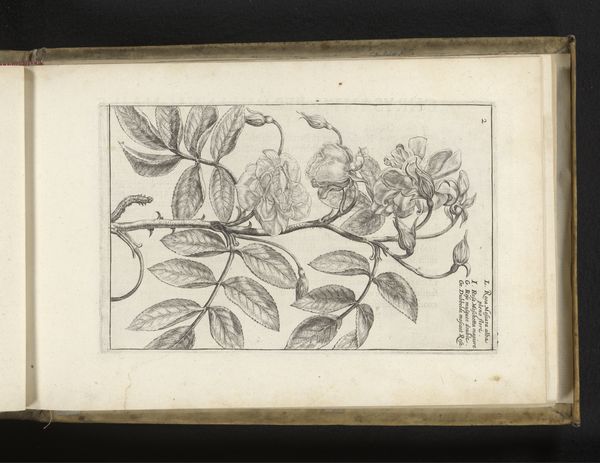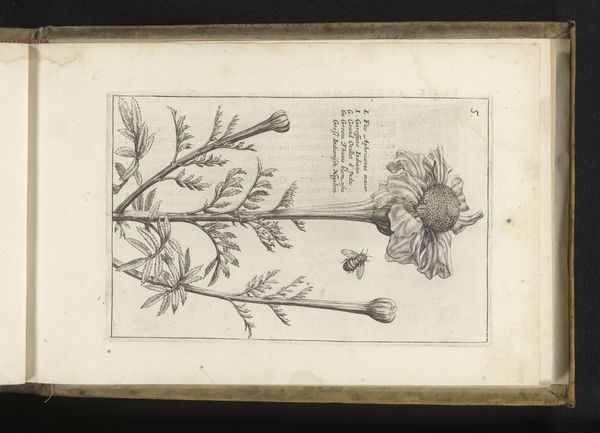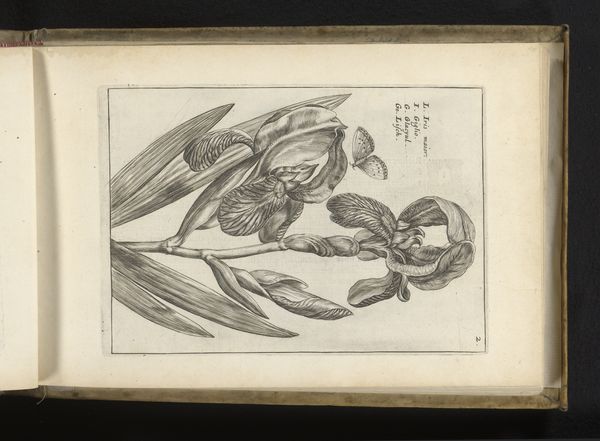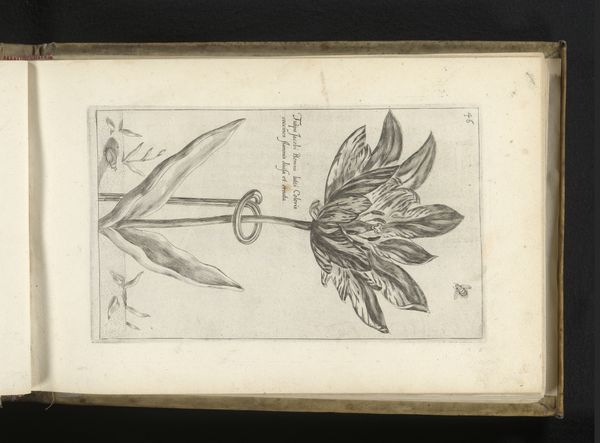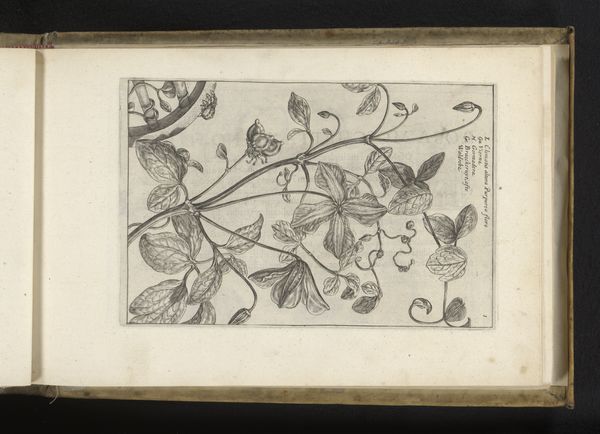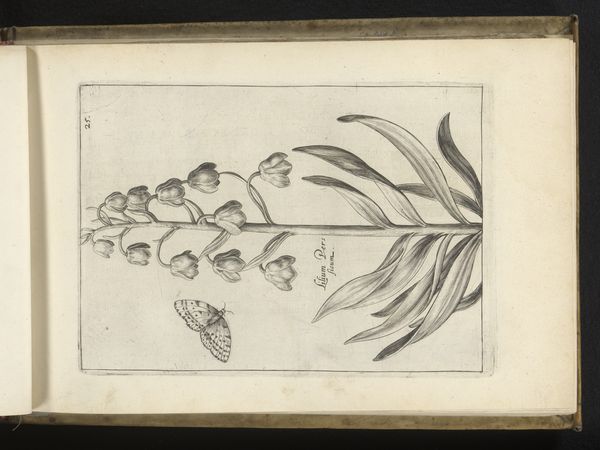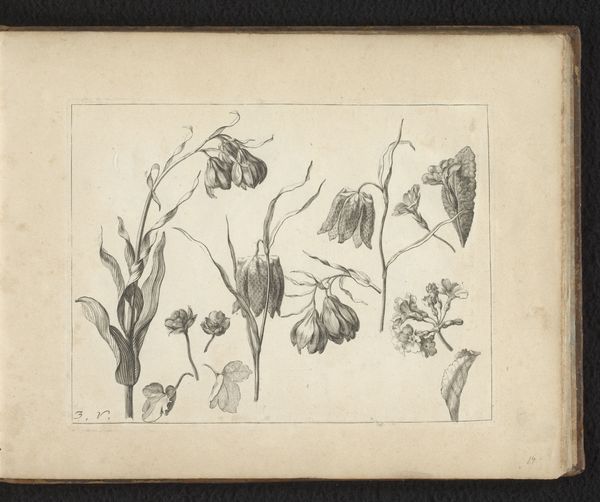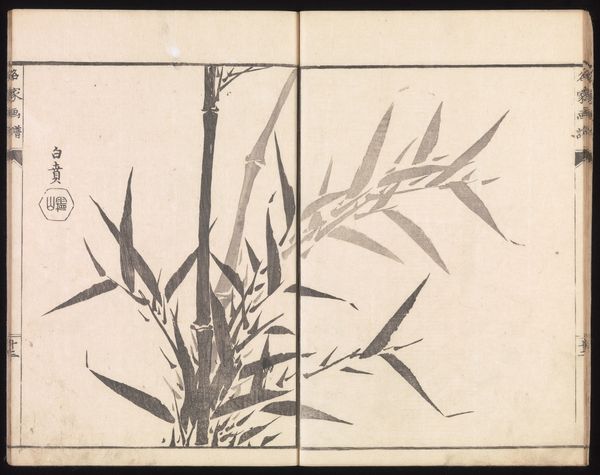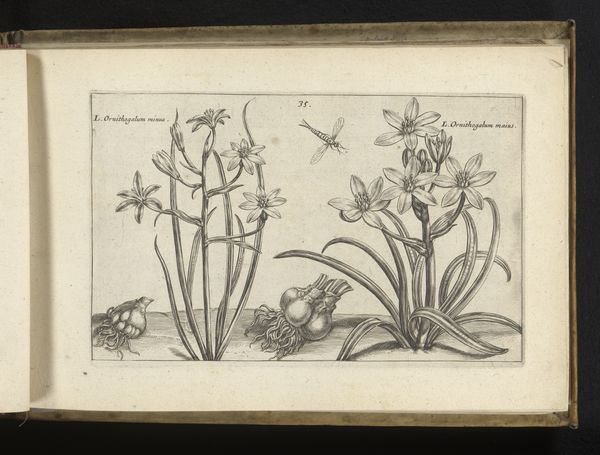
drawing, print, ink, engraving
#
drawing
#
baroque
# print
#
flower
#
ink
#
pen-ink sketch
#
northern-renaissance
#
engraving
Dimensions: height 214 mm, width 148 mm
Copyright: Rijks Museum: Open Domain
Curator: What strikes me immediately is the precision. The delicacy of the line work is almost mesmerizing. Editor: Indeed! We’re looking at “Siberische iris, (Iris sibirica),” a print made with engraving and ink by Crispijn van de Passe the Younger in 1617. It's currently held at the Rijksmuseum. What draws your attention to the work? Curator: Well, beyond the obvious beauty, I am drawn to how meticulously this iris is rendered. Each leaf and petal seems to possess a symbolic weight, conveying ideas about the natural world during the Baroque period. Do you notice how the blooms seems to almost cascade, nodding their heavy heads. It gives an overwhelming sense of something…passing. Editor: From my perspective, the medium of print is particularly fascinating. It allows us to think about how knowledge of the natural world was circulated at the time. This image wouldn't be confined to a wealthy patron’s gallery; instead it could be distributed amongst a growing class of scholars and gardening enthusiasts. Curator: That’s true, this allowed for knowledge to be distributed far beyond the gardens that only elites would be able to enjoy directly. Did iris imagery hold any additional significance in the early 17th century? Editor: Absolutely. Irises, like lilies, are often tied to themes of royalty and divinity. Even the sword-like shape of their leaves evokes the power associated with kingship and their connection to the divine will. I also read the printmaking medium itself, specifically engravings at that moment in time, as indicative of a culture on the verge of an explosion of information and ways of seeing. Curator: It seems you are right to point that the engraving medium itself represents expanding intellectual horizons. I do wonder about the labor involved in such detailed printmaking. To painstakingly recreate each curve and vein—a task far removed from simply experiencing the iris in nature. Editor: Agreed. It reveals the artist's labor and the processes needed to achieve this naturalistic depiction and reminds us about the skilled craftsmanship often overlooked in these historical works. I've gained a newfound respect for this quiet little page, looking closer. Curator: And for me, this journey has affirmed that there is more here than meets the eye. More than just the faithful rendering of a flower—but a carefully orchestrated symbolism too.
Comments
No comments
Be the first to comment and join the conversation on the ultimate creative platform.
